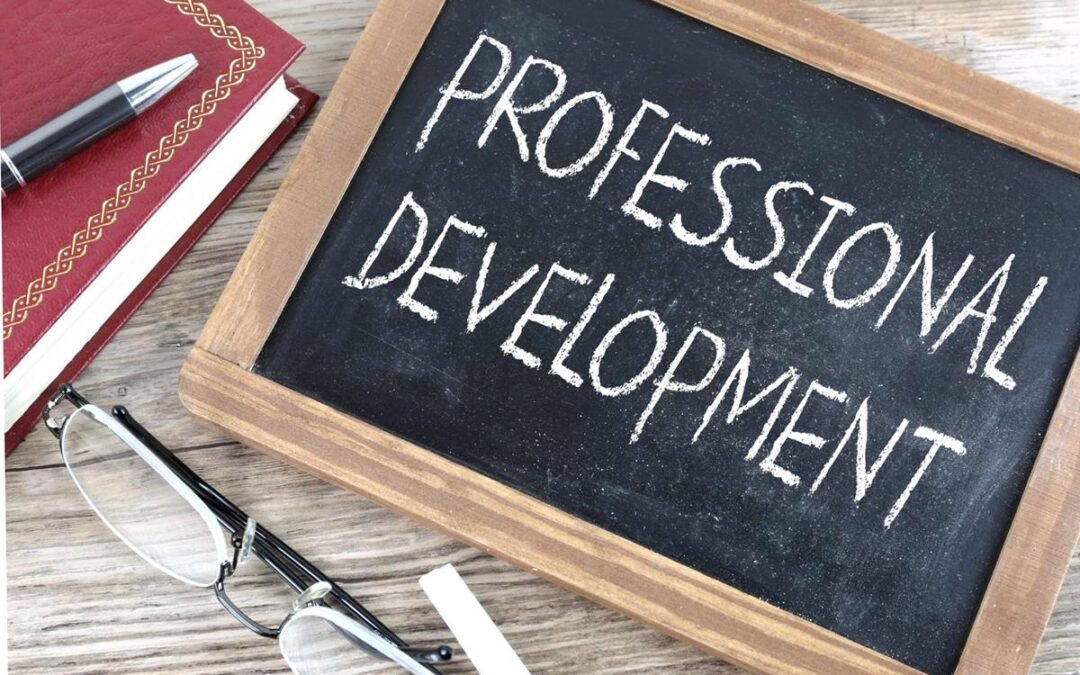
6 words to eliminate from your vocabulary today

Words make a difference. What we say and how we say it* matter. So, before we open our mouths and release the floodgates, we ought to make sure what we’re saying matches what we mean…and leads us to communicate what we’re trying to communicate.
Along the same lines, there are some words that just plain don’t do us any favors. I’m not talking about overused acronyms like “LOL,” jargony terms like “circle back,” or profanity that’s used haphazardly (a clever, pointed curse word sometimes carries a powerful, emphatic punch!); rather, I’ve identified six words that often find themselves sprawled in front of us, tripping us up and causing vocabularic mayhem while we’re trying to stride confidently forward.
Here’s my list (in alphabetical order). Take these words, lock ‘em in a box, and throw away the key.
But
The little word “but” can be used as a preposition or an adverb, and those are typically fine. What I’m concerned with, however, is the use of “but” as a conjunction, especially when it’s used in feedback or other professional communication.
Example A: “This was a great lesson, but the students weren’t following along.”
Example B: “I enjoy working with you, but this is frustrating.”
By using “but” in these examples, the speaker is providing a contrast. It’s often done reflexively, without considering the impact. Unfortunately, the contrast illuminated by this particular conjunction nullifies the first clause. The part meant to be complimentary (“This was a great lesson,” or “I enjoy working with you”) becomes void. The only part heard by the listener is the second clause, which now becomes harsher.
Using the word “but” essentially drove a wedge between the two ideas, which could actually be compatible with one another. Worse, the word “but” drove a wedge between the two people – the speaker and the listener.
Try this instead: Remove the word “but” and insert the word “and” as a coordinating conjunction.
Example A, take 2: “This was a great lesson, and the kids weren’t following along.” By using “and,” rather than dismissing the first clause, the speaker is positioning the second clause as a curiosity, as if to say, “That’s strange, why weren’t the kids following along with that great lesson?” That brings the two people together to try to solve the mystery, rather than positioning themselves as adversaries.
Example B, take 2: “I enjoy working with you, and this is frustrating.” The overarching theme here is that this is an enjoyable partnership, and whatever just happened is a one-off that we can remedy together. There’s no reason both can’t be true, and by using “and,” we’re acknowledging that they are both, indeed, true.
Can’t
Here’s a word that socks us in the teeth right in the moment we need our confidence to soar the most. Is there a word that hamstrings our efforts more than this one? Let’s dig in.
Example C: “I can’t write a solid 5-paragraph essay.”
Example D: “I can’t leave work at a reasonable hour because of my to-do list.”
First of all, oh yes you can! Whenever you say “can’t,” you’re convincing yourself that you, well, can’t do something. Usually, what we’re discussing is something we actually want to do, and because our brains are predisposed to believing what we tell them, why in the world would we tell ourselves we can’t do something we want to do? Why would we put a limit on our potential? Why would we put a ceiling on our dreams?
Maybe it’s fear, lack of desire, or self-preservation, on the off chance we don’t accomplish the goal – then our failure isn’t a result of our lack of effort or talent, it’s because of a predetermined reality over which we held no sway. It was fate, not my fault!
Try this instead: Incorporate the growth-mindset’s poster child, “yet.”
Example C, take 2: “I haven’t mastered the solid 5-paragraph essay yet.” By using this language, you’ve given yourself permission to learn, to grow, to develop your skills. You’ve opened the door to possibility, and you’ve indicated to yourself that you have the potential to do something that’s proven very difficult so far.
Example D, take 2: “I have yet to figure out how to get all my stuff done so I can leave work at a reasonable hour.” There’s a solution to this problem out there somewhere, and you are going to find it! You’re giving yourself a little grace while acknowledging that you’ve got a goal and your plan, thus far, hasn’t panned out. You’re willing to keep trying until you figure it out!
Once we begin to harness our words and tether them to our intentions, we have a much better chance of communicating effectively, bringing people and ideas together, and striding confidently toward our goals.
Don’t
We know from studies using fMRI analysis that our brains make images of words to help make sense of them for us. What kinds of words lend themselves to images? Nouns (persons, places, and things) and verbs (actions). We can see them in our mind’s eye. Here are a couple of simple examples of nouns: Taylor Swift, sidewalk, watermelon. And now some verbs: swim, danced, rappelling. Your brain has likely encoded images for those words, and those images appeared as you read the words.
The word “don’t” doesn’t create an image.
Try this: Don’t think of a volcano.
What image just popped into your mind? An erupting mountaintop, right? Whoops, that was the opposite of the imperative I gave you. I wanted you to not think of a volcano, not to actually think of a volcano. Darnit.
How many times in our daily live do we express the very things we’re trying to avoid? We save the shotgun seat for the word “don’t,” thinking it won’t really alter the outcome much. However, “don’t” ends up driving the car.
Example E: “I don’t want to keep accumulating debt.”
Example F: “Don’t get mad when I tell you this…”
Try this instead: Say what you want, rather than what you want to avoid.
Example E, take 2: “I’m looking for a way to manage my finances.” Now you’re in the driver’s seat. Instead of picturing yourself underneath a mountain of debt, you’ve got your detective hat on, pipe gripped between your teeth, magnifying glass poised for action, as you actively seek a solution to your pressing need.
Example F, take 2: Just say what you want to say. Ditch the “don’t” qualifier. So instead of prepping your conversation partner that what you’re going to say will make them mad, just say it and allow their emotion, whatever it is, to follow naturally.
Just
A few minutes ago, you read about how the word “can’t” has a powerful negative effect on your self-talk and self-image. Here’s another one that often takes a lead pipe to the knees of your self-esteem: “just.” How much do you want to diminish yourself? Do you want people to think less of you before you even have a chance to show them how amazing you are?
When we throw the common adverb “just” into our descriptions of ourselves, we strip away our power, reduce our sense of self-worth, devalue our accomplishments.
Don’t believe me? Try these on for size:
Example G: “I’m just a teacher.”
Example H: “I was just trying to help.”
What value did the word “just” add to those statements? A subtractive value, if you can believe it! Are you not proud to be a teacher? Is being a teacher a rubbish job? When we say “just a teacher,” it sure sounds like we’re positioning it diametrically opposite all the worthwhile, respected, valued careers out there.
Or maybe the “just” is included as a way to demonstrate humility. Instead of pounding your chest and screaming from the rooftops, “I’m a teacher, hear me roar,” it’s as if you’re saying, “I’m a teacher, and I can do a lot; however, I can only do what I can do. I’m not a miracle worker, unfortunately.” Okay, sure, and…
Try this instead: Say what you were going to say without including “just.”
Example G, take 2: “I’m a teacher.” Now it sounds a little more like you’ve got a little pride in the fact that you’re part of the noblest profession known to humankind. Stick a flag on that mountaintop and own it, whatever definition you choose.
Example H, take 2: “I was trying to help.” We haven’t addressed this one yet. Rather than abashedly shrugging away your lack of input, stand confidently behind your intent. You were trying to help. That’s huge! Our strategies don’t always work out; if the objective is true, however, you’ve got no reason for shying away from it.
Should
Here’s a loaded term that I try to avoid at all costs. The modal verb “should” implies that:
- the speaker knows what is best, so listen up (Example I: “There should be more free parking spots downtown.”);
- the speaker knew better (Example J: “They should have known better than to get into that argument.”); or
- the speaker’s advice is primo, Grey Poupon, five-star quality (Example K: “You should use better grammar in your blogs.”).
The problem with all three? Nobody likes getting “should” upon, so keep that “should” to yourself.
In most conversations, the discussants are equals. They’ve got a common problem to address, a common situation to face, a common question to answer, or a common goal to accomplish. When one person starts shoulding all over the place, it’s akin to a coyote leaving scat on a hiking trail to mark its territory, showing all-comers who’s the boss and who y’all defer to. It’s an attempt at shifting the power differential. “I know best, you don’t.” Do you know who else tries to shift the power differential in a conversation, relationship, or interaction? Bullies. Especially bullies with privilege, which is why I often challenge myself with this prompt when I hear the word “should” escape my lips: Is this a moment where you can check your privilege?
Try this instead: Ask a question (with curiosity, not judgment) if possible; if not, use “could” or “might” in lieu of “should.”
Example I, take 2: “I wonder how the city determines where the free parking spots will be?” There’s definitely curiosity embedded in this question. Of course there’s a reason for the parking spots downtown, and since you don’t know what it is, maybe this would be a fun chat over a salad.
Example J, take 2: “Do you think they could have foreseen that argument and somehow avoided it?” Eek, right? Hindsight is always 20/20, and announcing it ex post facto doesn’t help. However, when things go awry, there’s a lesson for us if we’re open to it. This phrasing shows that we’re open to it.
Example K, take 2: “Would you help me understand your use of grammar in certain places in this blog?” Let’s be partners in this! Even if the answer is “no, it’s my blog, so butt out,” at least we’ve asked if we can be a part of the process. In doing so, we’re likely bringing ourselves closer to our conversation partner.
They
I’m not talking about personal pronouns here, I’m highlighting the perceived unanimity cloaked in the language of “they.” We do this often: attribute the behaviors, conflicts, characteristics, attitudes, or comments of a few – or sometimes just a noisy one – to the masses. We lump everyone together.
And once we lump everyone together, there’s no wiggle room for exceptions. The implication in the word “they” is 100%. All. Everyone.
Example L: “They hate staff meetings.”
Example M: “They can’t sit still for more than 5 minutes without their phones.”
When we take the time to analyze the reality, we’ll find that some (perhaps “many” or even “most”) meet the criterion we’ve laid out, but not everyone.
In this regard, I’m really using “they” as the spokesperson for the overuse of superlatives, extremes, hyperbole, and other inflexible blanket statements. Words like always, never, everyone, no one, best, worst…you catch my drift?
In poetry, song lyrics, speeches, even storytelling, the use of these literary devices is creative and evocative. In everyday, professional dialogue, it can be quite dangerous if we take the terms seriously and at face value, which is often what happens.
Try this instead: Replace “they” with a more accurate description.
Example L, take 2: “I have received some critical feedback about staff meetings in the past.” This is what’s really going on, right? And perhaps there’s an opportunity here to identify exactly what we’re trying to accomplish, and how can we reformat staff meetings to better meet that goal? Rather than dismiss the practice altogether, let’s examine our plan.
Example M, take 2: “It’s requiring a new skillset and different approaches to capture and hold many of my students’ attention.” Granted, when we’re emotionally worked up about a situation, it can be challenging to approach it cerebrally. However, if we’re truly looking for solutions and improvement, we must activate the prefrontal cortex and take ownership over our role in our reality.
Try these out and let me know how it goes!
*That’s actually the title of a great book for classroom teachers, written by my colleague and friend Mike Anderson. Check it out!
Pete Hall is the President/CEO of Strive Success Solutions. You can reach him via email at Pete@StriveSS.com.
Stay Up To Date
Stay up to date with the latest news updates and blog posts
Share Article
Share this post with your network and friends







Recent Comments